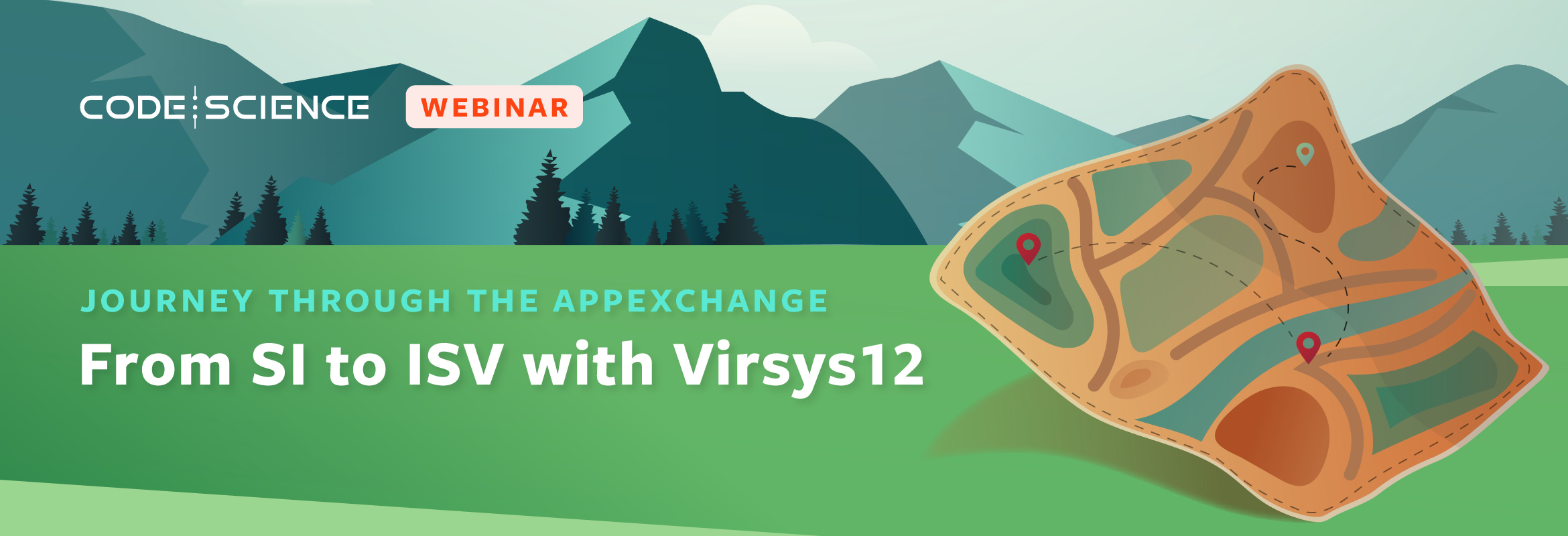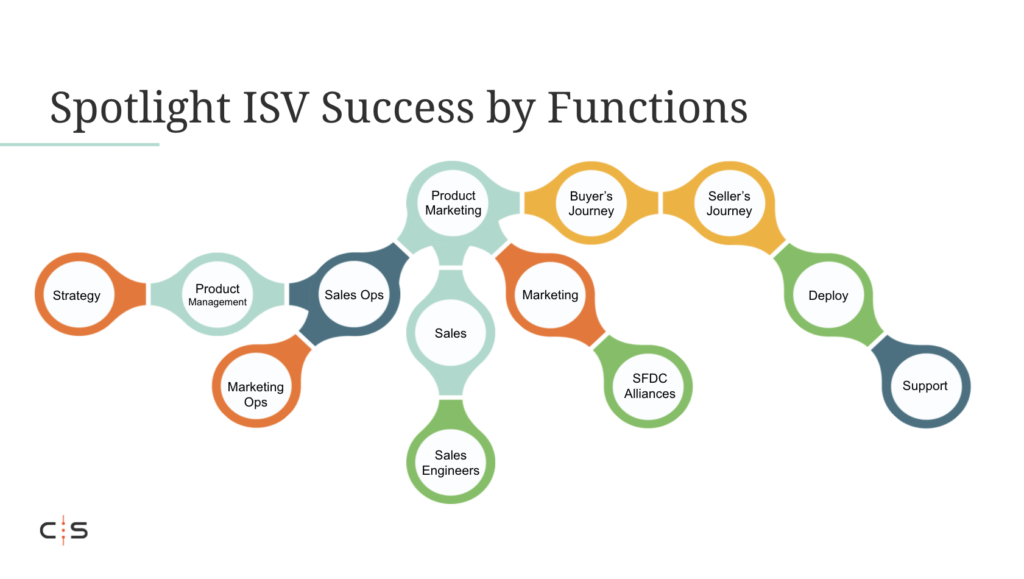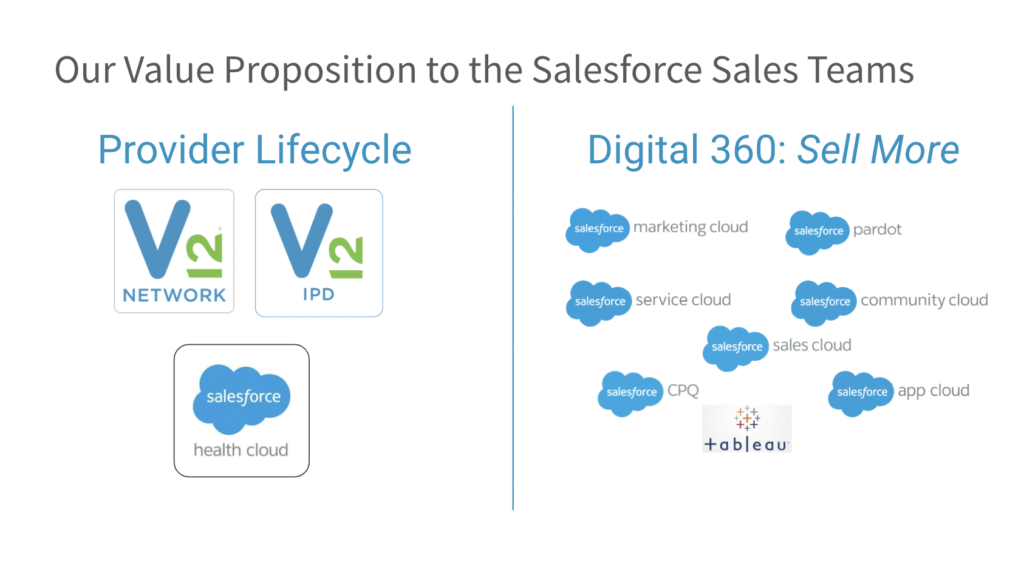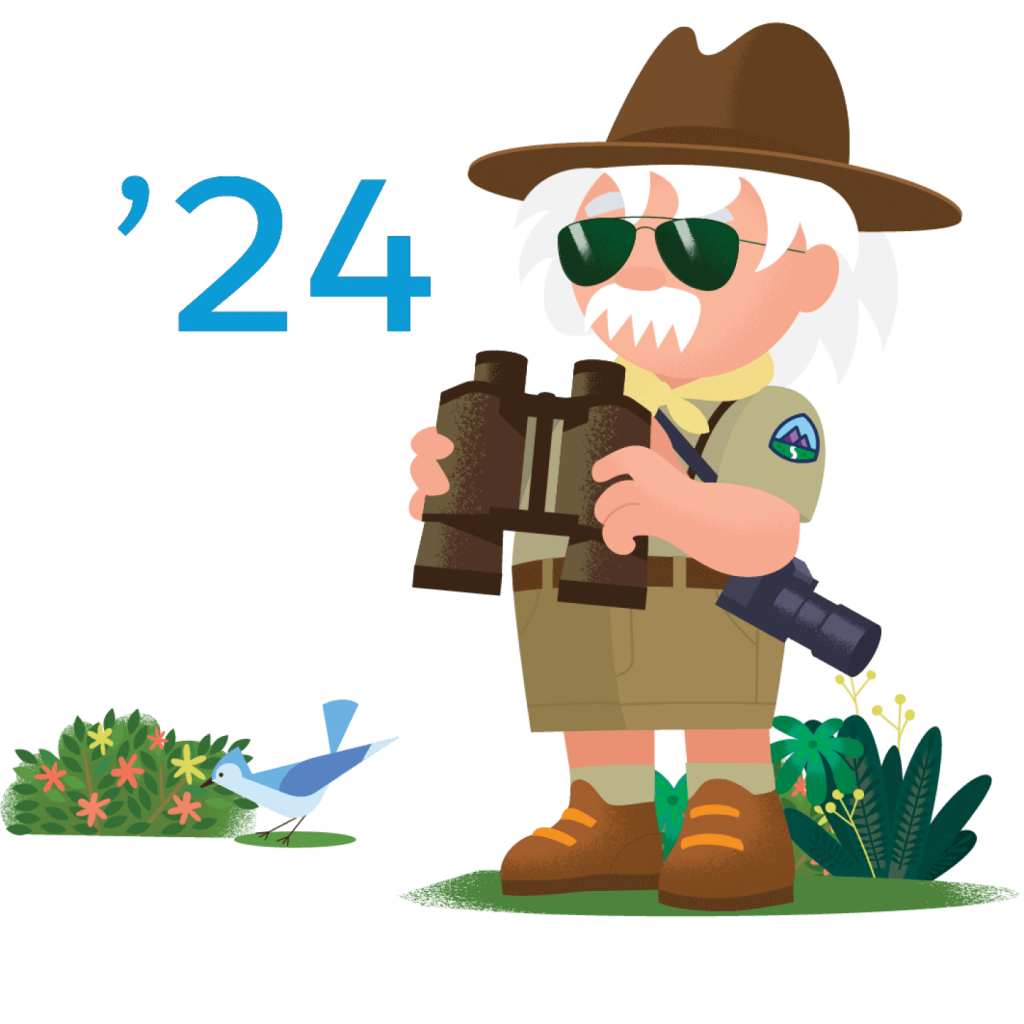
Salesforce is always on the lookout for domain knowledge in a particular segment of the market and if you can prove that you have that knowledge, you can drive great commercial success. But being a domain expert isn’t everything. You must also know how to grow that knowledge in the ever-changing Salesforce ecosystem.
In the latest webinar from our Journey Through the AppExchange series, CodeScience Chief Revenue Officer, Sean Hogan, spoke with Tammy Hawes, CEO of Virsys12, about how Virsys12 made the move from systems integrator (SI) to independent software vendor (ISV). In doing so, Virsys12 has transformed the business of healthcare with multiple apps on the Salesforce AppExchange that solve payer and provider complexity.
If one thing is certain in your Salesforce journey, it’s that you will not stay stagnant in one swim lane. You will eventually need to make a shift, and this webinar series features advice that will help you construct a plan and make the move. As the webinar began, Tammy stated that being a lifelong learner and listening to shared experiences from other companies who have gone through similar journeys helped her through the AppExchange process and continues to help today.
Watch the webinar now and read up on a few of the highlights from their chat below.
Filling a Gap
When Virsys12 was first starting out in 2011, they would work with anyone who wanted to implement the Salesforce product, as many SIs do. In those days, Health Cloud did not exist, so they were implementing Sales Cloud and Service Cloud, but in the healthcare sphere. Their customers at the time wanted more alignment with the healthcare industry as they needed to track interactions and provide a call center for patients.
Around 2013, Virsys12 recognized that by filling this gap, they could align with the direction of where the healthcare industry was going as a whole, and where technology was headed in the future. They knew that they needed to transition from one-off deployments to create market fit with a Salesforce product. Virsys12 created a new app targeted at accountable care organizations (ACOs) and has grown it ever since. As Tammy said, “We all learn as we go. And every year we’ve learned something new about a gap in the healthcare market, very specific to this use case where we had another set of customers that we could serve with our product. So it’s been a phenomenal ride.”
The Journey to ISV
Sean pointed out that all of this started when Tammy’s team began to see a trend and decided to make the difficult move from services to software. Tammy agreed that it was a significant shift to make but that she thought the Salesforce platform “would be a game-changer around how software was delivered to customers and how people could develop very complex workflows and processes very quickly on the platform.”
One of the reasons it’s so tough to go from an SI to an ISV is because the way SI and ISV businesses are run is completely different. The types of people you hire and the kind of support you need to have will change depending on the business. Virsys12 overcame this challenge by keeping a focus on their app and minimizing the things that weren’t an asset for them as they made the move to ISV. And what really made a difference, Tammy said, was that they “were industry experts. We knew this business, we knew what needed to be done out there, and we capitalized on that. And developed really deep rich functionality.”

Sean agreed that knowing the ins and outs of your business can sometimes make or break an ISV. He stated that “that seems to be the winning formula: when you’re a domain expert and you stay in that domain, you can make the transition. But it does mean you literally need to transform so many things of your company: the financials, who you hire, why you hire, and how you finance that transition.”
Driving Sales on Health Cloud
After seeing success on the Salesforce platform, Virsys12 wanted to expand its footprint in the ecosystem and help drive Health Cloud sales, as well as the Salesforce direct team. When they could, Virsys12 began to reuse the Health Cloud objects in order to help improve the “stickiness” of their product by enabling customers to integrate it with apps already in use. Once they presented this use case for Health Cloud to their customers, they could include more Salesforce platforms like Marketing Cloud, Service Cloud, and Sales Cloud.

This strategy allowed Virsys12 to have a win-win relationship with the Salesforce Account Executives because their product required a Health Cloud license and an upsell typically followed. Tammy confidently stated, “We’ve never implemented one of these where it’s not an upsell. We can not only sell our product, but we can also implement some of these other products alongside it if we need to. And it’s working out very well for us. There are still challenges, but we think it’s our secret sauce.”
A Final Takeaway
There are so many opportunities for growth in the Salesforce ecosystem but Tammy’s main takeaway is to focus on what you know. The fact that they were already experts in their industry helped Virsys12 understand its customers and what they needed from the Salesforce platform. Salesforce itself is a customer-first company, so they expect their partners to follow suit. Tammy remarked, “It’s a lot of work to be a Salesforce partner, both as an ISV and an SI. But at the end of the day, if you’re doing the right thing for your customers, the rest of it works out. The partnership works if the customers are happy with your product, you’re delivering value, and you’re selling, and you’re doing it in tandem with Salesforce.”
To hear more from Sean and Tammy and get a copy of the deck, register and watch the webinar here.
Companies build their Salesforce businesses better with CodeScience. It is our mission that no ISV navigates Salesforce alone. If you’re looking for guidance on your product, help supporting your customers, or just need to ask an expert, get in touch today!


